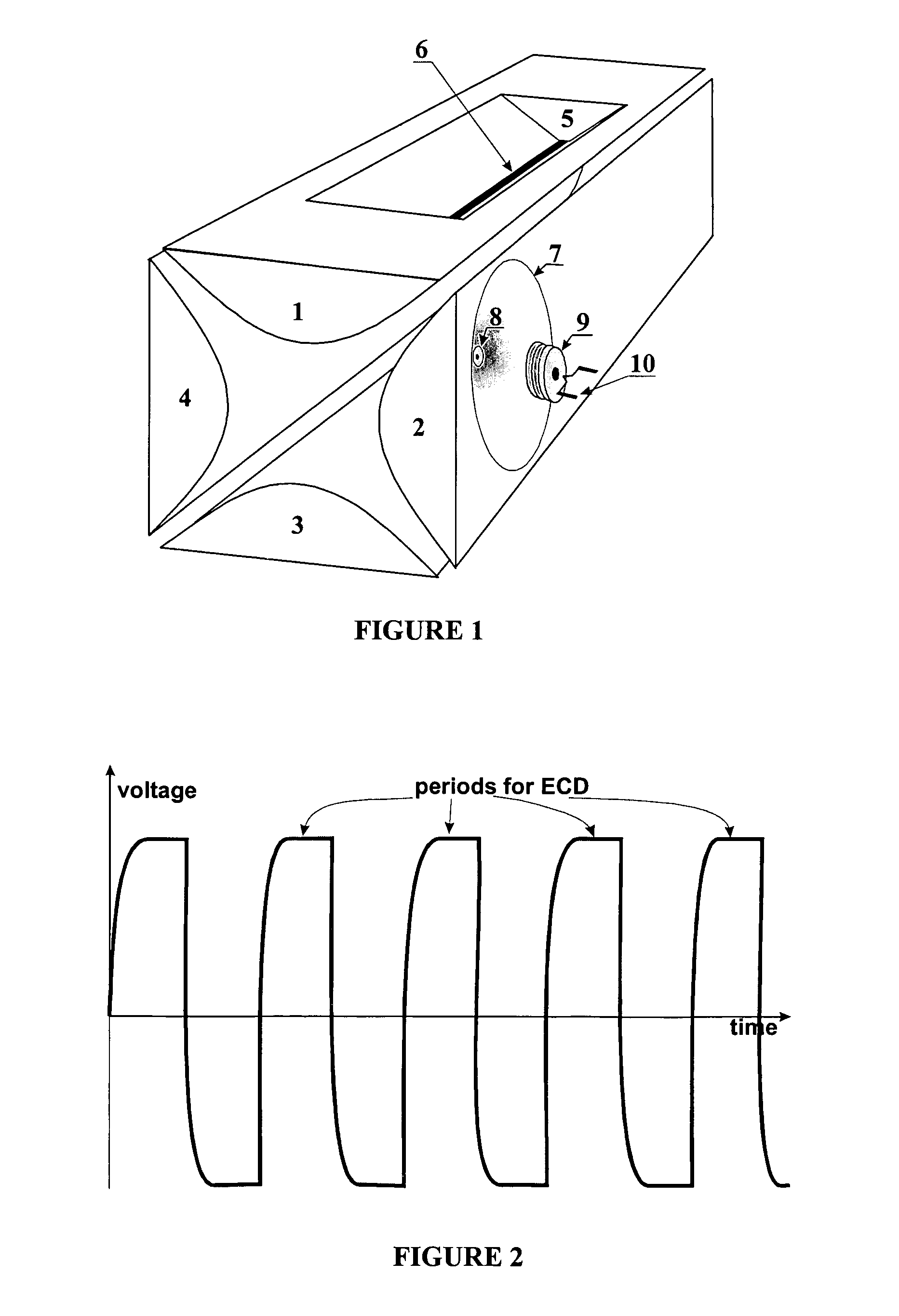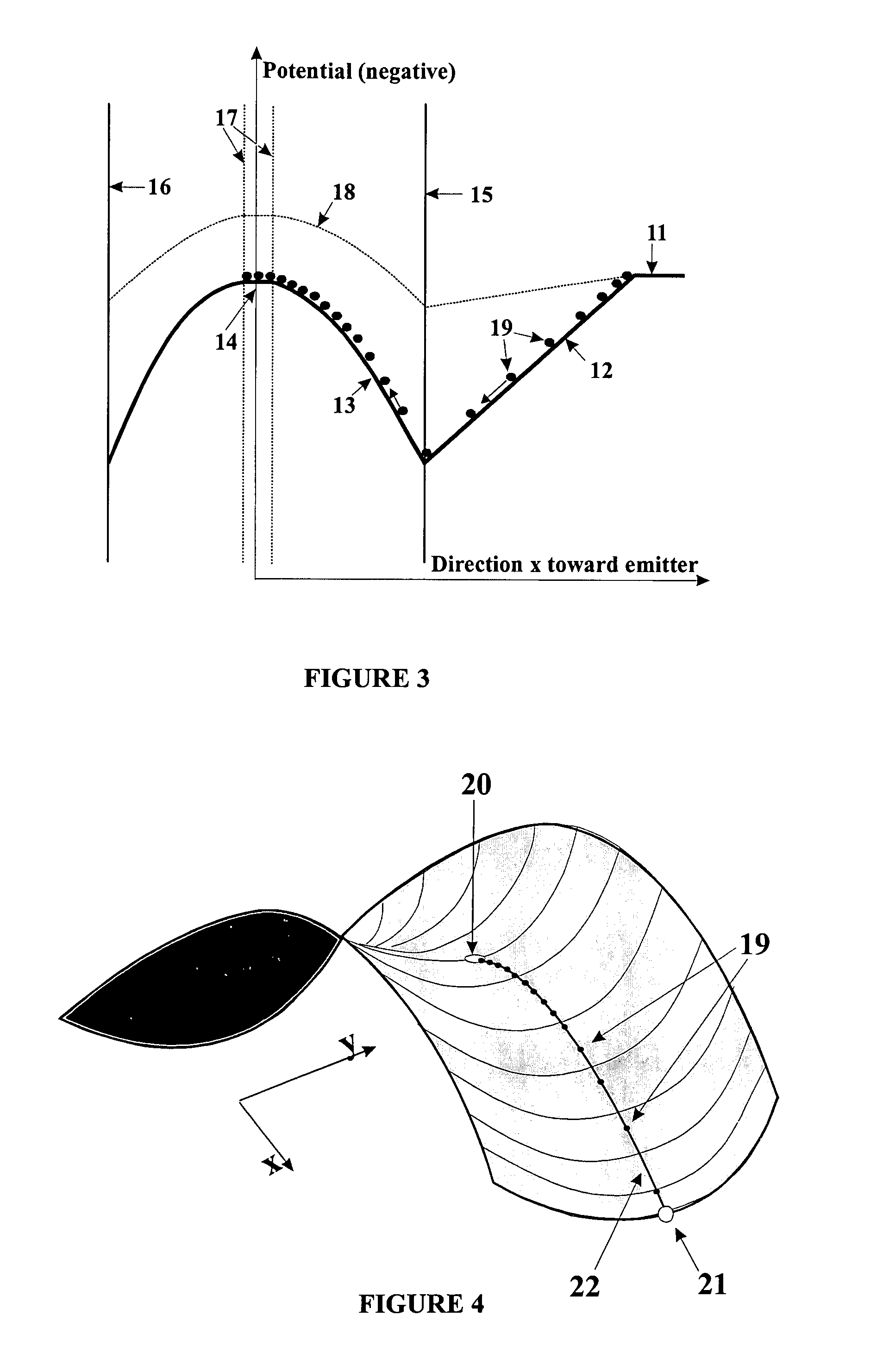Ion fragmentation by electron capture in linear RF ion traps
a technology of ion capture and electron capture, which is applied in the direction of electron/ion optical arrangement, particle separator tube details, separation process, etc., can solve the problem of limited mass spectrum information, and achieve the effect of prolonging the period of electron captur
- Summary
- Abstract
- Description
- Claims
- Application Information
AI Technical Summary
Benefits of technology
Problems solved by technology
Method used
Image
Examples
Embodiment Construction
[0030]One of a set of favorable embodiments of the invention is illustrated in FIG. 1 and shows a linear RF ion trap as part of a linear RF ion trap mass spectrometer for radial mass selective ejection of ions through slit (6) in pole rod (1). FIG. 1 does not show, for reasons of clarity, the front closing diaphragms with ion repelling DC voltages. The linear quadrupole RF ion trap is equipped with an injection device for electrons from a thermionic cathode (10) and with a set of diaphragms (9) for controlling the electron beam. The injection of the electrons occurs in this case through a small opening (8) in the RF-carrying pole rod (2). The injection opening here is located at a point of the linear RF ion trap which is not covered by the ejection slit (6), in order that the small electron injection opening does not disturb the ejection. The diaphragm set (9) serves to switch the electron beam on and off and to focus it onto the small opening (8).
[0031]When the electrons are not ab...
PUM
 Login to View More
Login to View More Abstract
Description
Claims
Application Information
 Login to View More
Login to View More - R&D
- Intellectual Property
- Life Sciences
- Materials
- Tech Scout
- Unparalleled Data Quality
- Higher Quality Content
- 60% Fewer Hallucinations
Browse by: Latest US Patents, China's latest patents, Technical Efficacy Thesaurus, Application Domain, Technology Topic, Popular Technical Reports.
© 2025 PatSnap. All rights reserved.Legal|Privacy policy|Modern Slavery Act Transparency Statement|Sitemap|About US| Contact US: help@patsnap.com



